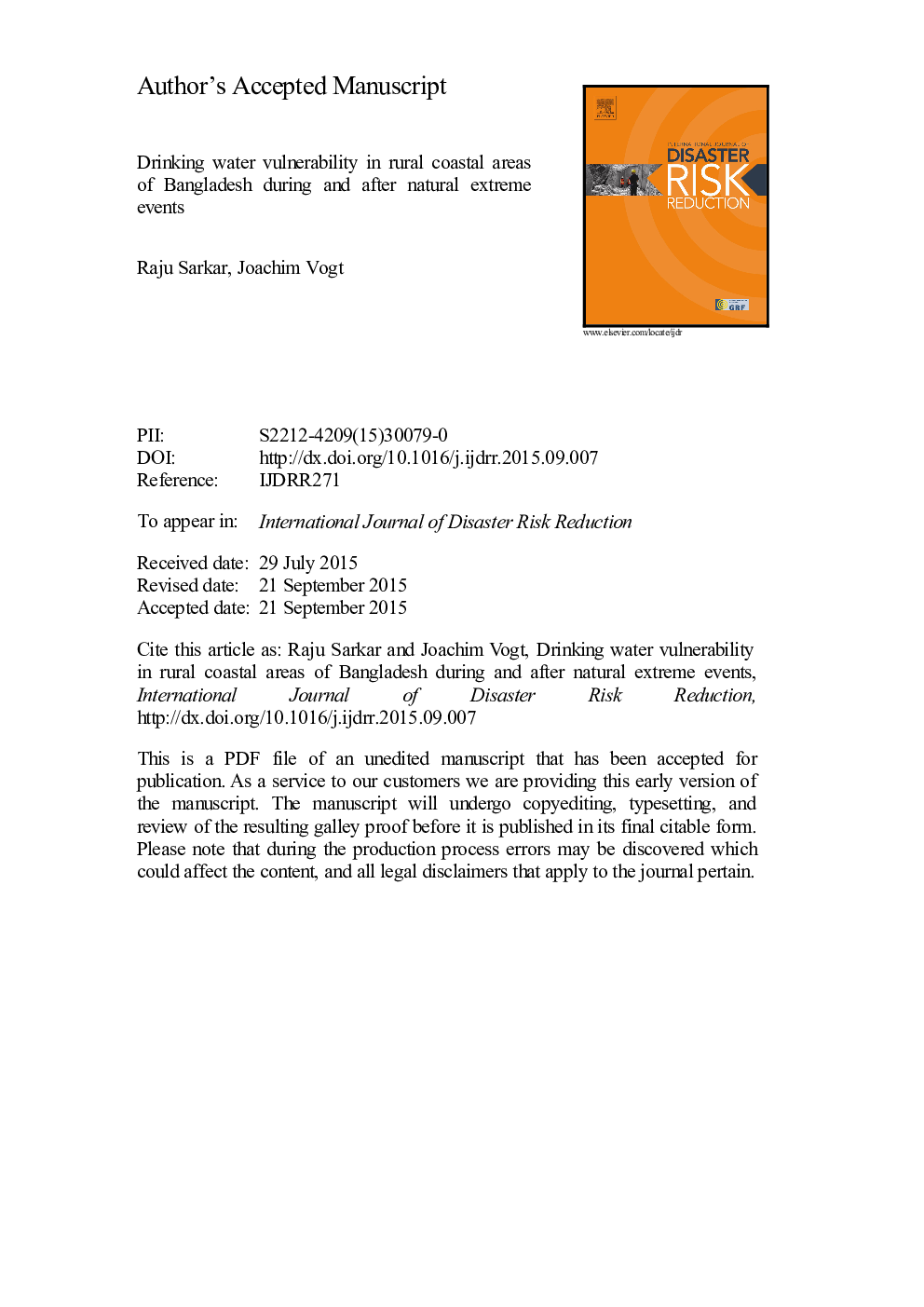| Article ID | Journal | Published Year | Pages | File Type |
|---|---|---|---|---|
| 7472898 | International Journal of Disaster Risk Reduction | 2015 | 32 Pages |
Abstract
The collapse of drinking water management systems is one of the most serious consequences of natural disasters. This article aims to analyze the vulnerability of drinking water management during and after a natural disaster in the rural and coastal areas of Bangladesh. We have considered the extreme event of cyclone 'Aila', which devastated the coastal district of Satkhira in 2009. In the study area, the collection of drinking water in normal situations is difficult mainly because of the spatially varied availability of drinking water sources (tube wells, ponds and rainwater harvesting units). In addition, the decreasing trend in pre-monsoon rainfall intensity as well as the increased salinity play a significant role in this regard. Due to the destruction of the coastal embankment during cyclone 'Aila', saltwater intruded into the locality and heavily damaged the drinking water sources. To analyze the associated vulnerability factors in the drinking water sector, we conducted a household-based structured questionnaire survey in three 'mouza' (revenue collection unit) of the Satkhira district. Using principal component analysis, we have identified six factors influencing drinking water vulnerability. The factors are related to warning dissemination, damage to water sources, damage to household's water reserves, collection time, family composition, and frequency of water collection. We have used the factors to prepare an index for the comparative analysis of vulnerability among the three 'mouza'. Considering the vulnerability issues, the article concludes by presenting the scope for a robust drinking water management plan for the coastal areas of Bangladesh.
Keywords
Related Topics
Physical Sciences and Engineering
Earth and Planetary Sciences
Geophysics
Authors
Raju Sarkar, Joachim Vogt,
